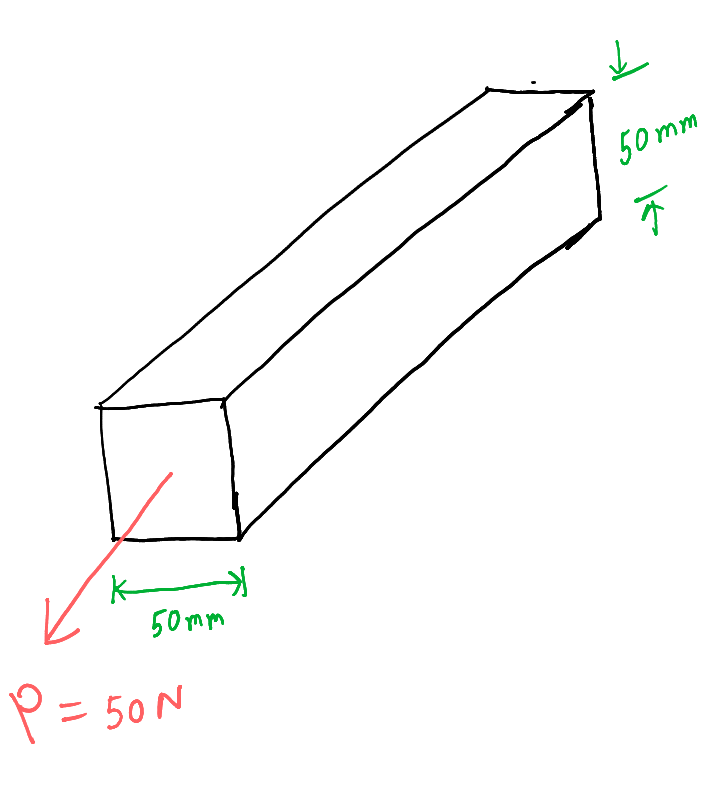The stress vs strain curve is a famous and useful diagram/curve used widely in material science, engineering and/or physics to describe the relationship between, well, the stress and the strain.
For those who don’t know a thing about all these, I’ve prepared a background discussion here:
Background Discussion
What is Stress?
When some amount of load (or force) is applied on a body the pressure that gets produced due to loading is called, in simple terms, the stress.
It has unit of \(\frac{N}{m^2}\)—SI unit that is. Which is just the unit of pressure, no? Yes—stress is kind of the same as the pressure on a body. This unit is also known as $Pa$ (Pascal).
Let’s consider the figure below.
 Here the body is being applied a force of
Here the body is being applied a force of $P = 25 N$. The area (at which the load is being applied) is: $A = 50 \times 50\ mm^2 = 25\times 10^{-4}\ m^2$.
So, the stress here is:
$\sigma = \frac{P}{A}$
$\implies \sigma = \frac{25}{25\times 10^{-4}} \frac{N}{m^2}$
$\therefore \sigma = 10,000\ Pa = 10\ kPa$
What is strain?
Strain is just the ratio of the deformation of a body to its original length, which is under a certain external load (and thus, certain external stress).
Strain has no unit. It is thus called dimensionless.
The body with length $L$ shown below (phase 1)—upon being applied external stress—elongates to length $L'$ (phase 2). So, the elongation becomes $\delta = L' - L$.

Now the strain will be:
$\epsilon = \frac{\delta}{L}$
So what’s all the fuss about?
Well, we generally